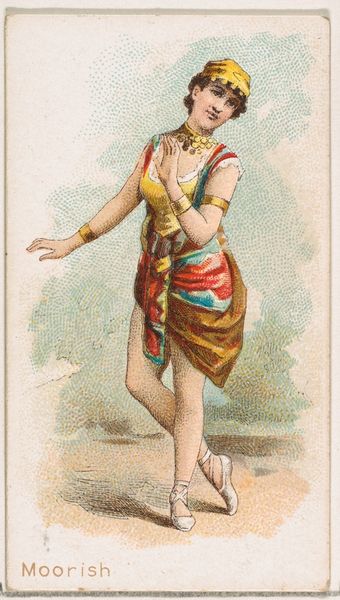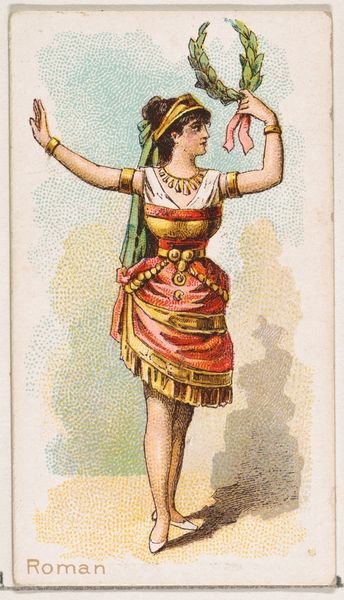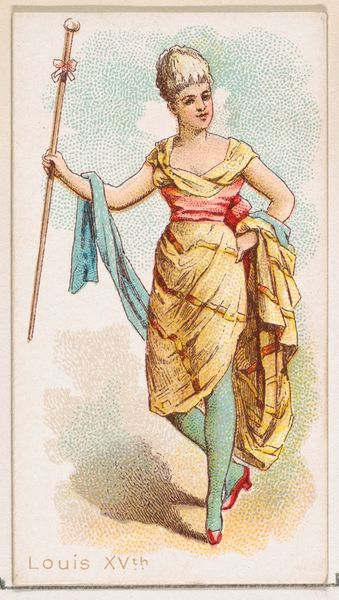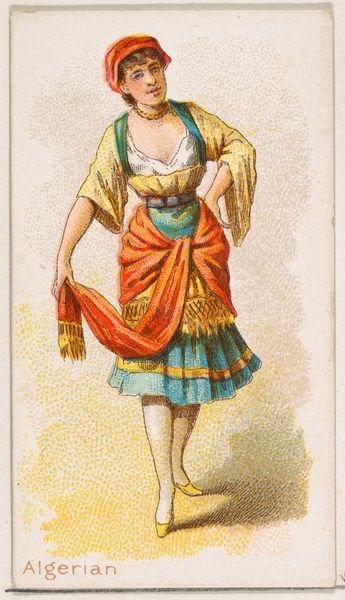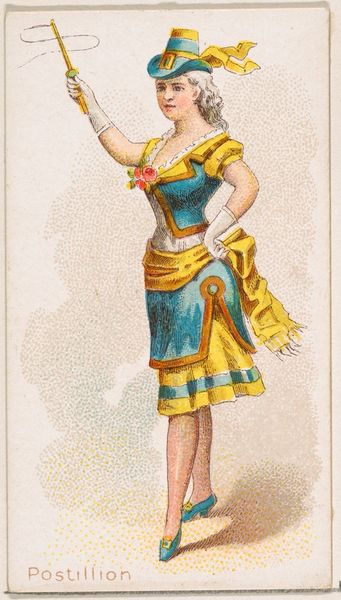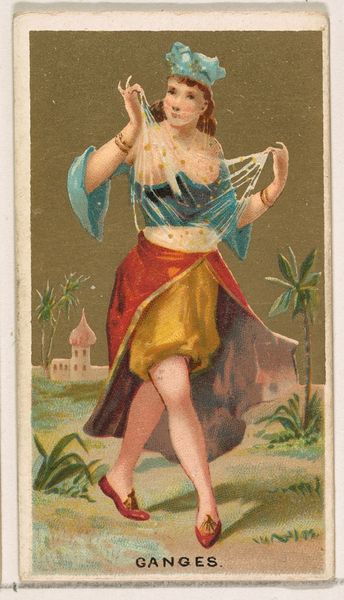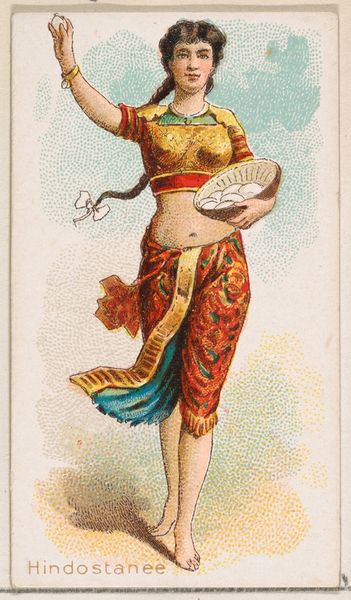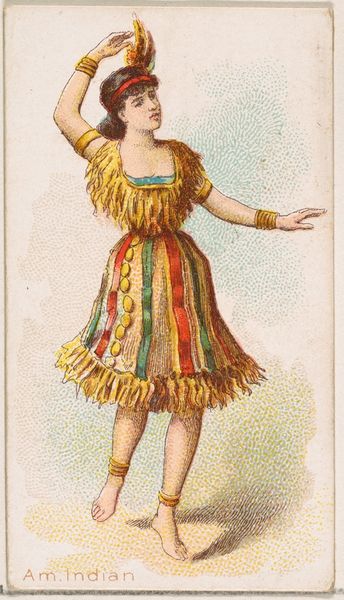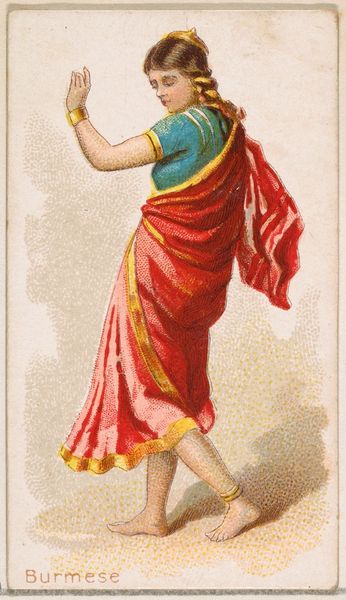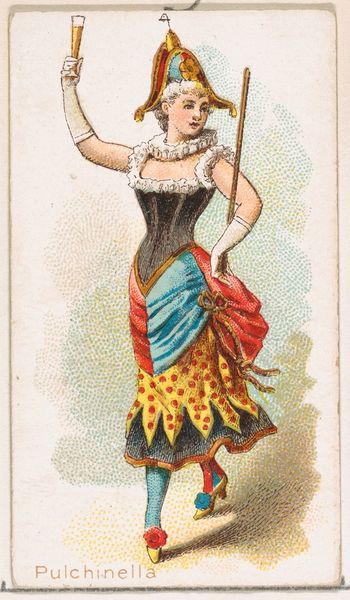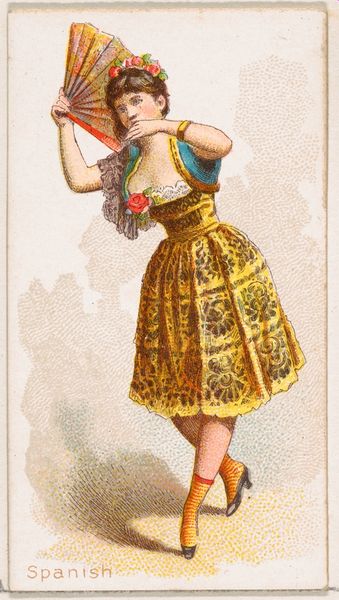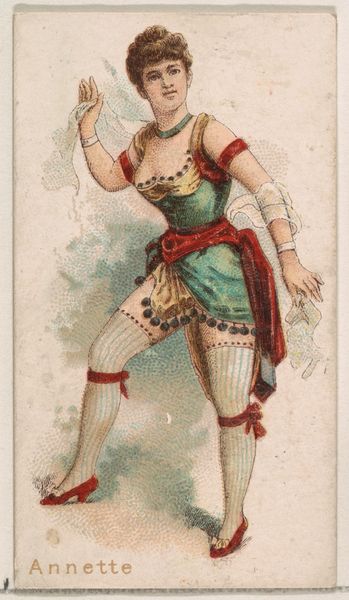
Egyptian Dancer, from the Dancing Women series (N186) issued by Wm. S. Kimball & Co. 1889
0:00
0:00
drawing, coloured-pencil, print
#
portrait
#
drawing
#
coloured-pencil
# print
#
caricature
#
asian-art
#
caricature
#
ancient-egyptian-art
#
figuration
#
coloured pencil
#
decorative-art
Dimensions: Sheet: 2 11/16 × 1 7/16 in. (6.9 × 3.7 cm)
Copyright: Public Domain
Curator: This charming colored pencil drawing, "Egyptian Dancer, from the Dancing Women series," was produced around 1889 by Wm. S. Kimball & Co. as part of a larger set of trading cards. It presents us with a vision of exotic femininity from that era. Editor: My first impression is a mix of delight and slight unease. The pose is so intentionally graceful, almost performative. And yet there's an air of, shall we say, "orientalism" that can be difficult to overlook through today's lens. Curator: Absolutely, the 'Egyptian' garb is theatrical, pulling from a collective visual memory rather than representing reality. Consider the headdress, its components evoking the divine. Such motifs tapped into then-contemporary fascinations with ancient Egypt, acting as potent symbols of timeless allure and mystery. Editor: That's precisely my point; this dancer embodies a Western fantasy. The small scale of the print—probably intended for trade cards as you say—suggests its disposability. Were these exoticized images fueling harmful stereotypes, normalizing skewed perceptions of other cultures for profit? Curator: Undeniably, and it is important to acknowledge that aspect of it, the presentation serves as a conduit for colonial-era imaginations, exoticising women. On the other hand, the artist incorporates historically-informed iconographic symbols. For instance, the lotus flower, held delicately in her hand, has long been associated with rebirth and regeneration in ancient Egyptian traditions. Editor: I can see your point regarding its potential for conveying enduring cultural symbols. But let's be frank: the way she’s positioned reduces her to mere eye candy. The gesture of the dance feels posed to highlight an objectified ideal, even leaning into caricature, when her origin in exoticism becomes the core element of appeal. Curator: That tension is essential to understanding pieces such as this. It mirrors Victorian-era society's fascination with the "other" through its distorted cultural mirrors. The artifice layered onto reality is part of its power. Editor: True, wrestling with those distortions can expose uncomfortable truths about the past, informing crucial dialogues about cultural sensitivity now. Curator: Precisely, its complex, multilayered messaging deserves mindful consideration, as well as historical grounding, beyond face value impressions. Editor: I’ll remember to appreciate that. Thanks to this thoughtful dance between visual fantasy and historical awareness, I leave with more questions than I arrived with.
Comments
No comments
Be the first to comment and join the conversation on the ultimate creative platform.
